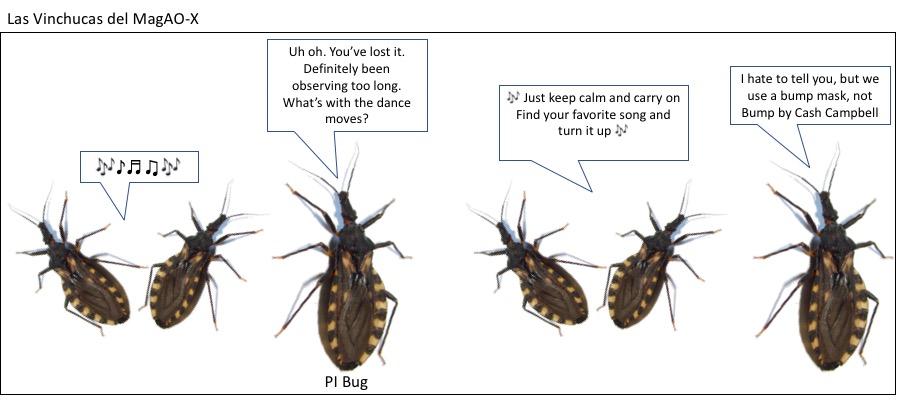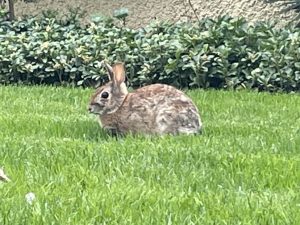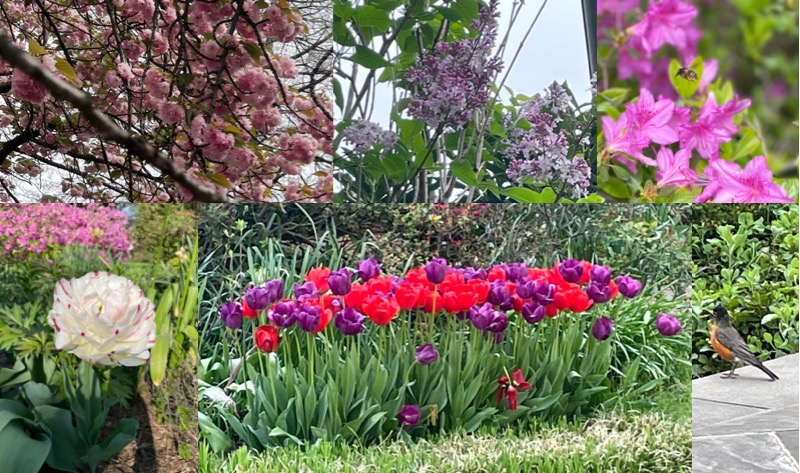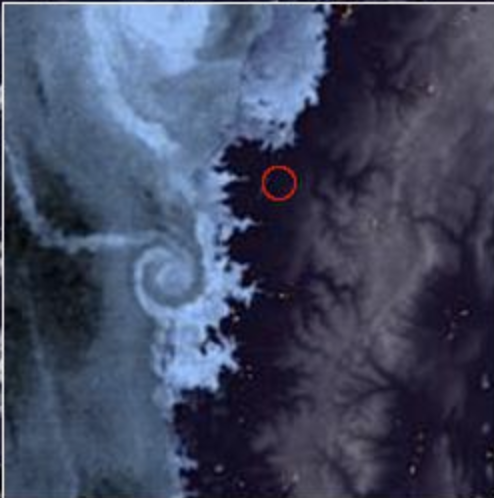Yes, Jared, it really is the last night!
I wish I could send a supersonic shipment to the MagAOX team to sustain them while they quickly pack up everything in the next day or so. I’d include really good coffee and Coke Zero (“We’ve really disrupted the economy of Las Campanas” –Joseph on the soda supply). I just realized I haven’t heard anything about wasabi peas, so maybe those too. If I get to join in person next time, I’ll bring goodies, I promise.
I’ve learned a little more about MagAO-X in the last few days, so I’m even competent to keep the log now, and I have dared to touch the web GUI to change the names of the files. I’m catching on to the procedures for starting on new targets, so with apologies to Herman Oliveras, former DuPont Telescope operator and cartoonist extraordinaire:

Yeah, there’s bad calls seeing and bad news speckles
Sometimes you don’t know what to do gain to slide
Your mind wave front sensor can turn a pebble into a boulder
Might feel like a mountain that you’re rolling over,
But it ain’t nothing but a bump. [With apologies to Cash Campbell]
An afternoon walk to stretch from a night of sitting and snacking is an observing must-have. I have long admired the local LCO flora and fauna (see old blog posts, e.g. here), particularly the vizcachas. Well, there are some consolations to remote observing — it’s spring here in Chevy Chase, MD, that miraculous season between the freezing rain and horrible humidity, and I did get to take a walk on a day that was pleasantly warm in my neighborhood bursting with flowers.
This vizzy relative was in my front yard enjoying a lunch buffet on my plants.

The neighborhood has a bit of a predator-prey cycle going with foxes. Come summer, when the rabbit is feasting on my vegetable garden, I’m going to try to lure some Carnegie Earth and Planets Lab foxes up the road a mile to here. Meanwhile, check out this video that a Carnegie postdoc posted today (take that LCO foxes, we have babies):
And for you desert dwellers, enjoy these colorful photos of the cherry tree and lilacs in my yard, tulips in neighbors’ yards, a busy bee on some azaleas, and a Robin on my front steps.

Speaking of things that are bright and striking …
The team has been calling the artificial spots placed by shaping the deformable mirror, which I can use for photometric calibration, “sparkles” (see Sebastiaan’s blog yesterday). I find the name apropos and not just because I like fireworks (in fact, the whole PSF including sparkles and diffraction looks like fireworks) but also because the alternative, “speckles” has too many meanings. I did my PhD thesis with a pre-adaptive optics technique called “speckle imaging.” Speckle is a horribly ambiguous term now, as AO-using scientists use the term speckles to mean any compact light on the detector, whether it arises from rapidly changing atmospheric cells (the way I used the term when I did my PhD), errors in wavefront correction, or is longer-lasting due to wavefront errors in the optical system.
Before this post totally spirals out of control, here’s a cool spiral from the satellite image at 220424T0537.

The seeing has finally gotten really good for me, and that makes me love a good night of observing! Speaking of love, it turns out sparkle is the subject of a lot of love songs. I think I’m going to love the sparkles placed by the deformable mirror when I go to reduce my data.
Earth Wind and Fire: Sparkle
“Harmonies in tune that reflect the moon
Sparkle, you’re so lovely in my sight”
Billy Holliday – Them There Eyes
“Sparkle, bubble, get you in a whole lot of trouble.”
Aretha Franklin: Sparkle
“Breathlessly and eager, you got me round your finger
A sparkle with the fire, you always take me higher”
Adios!